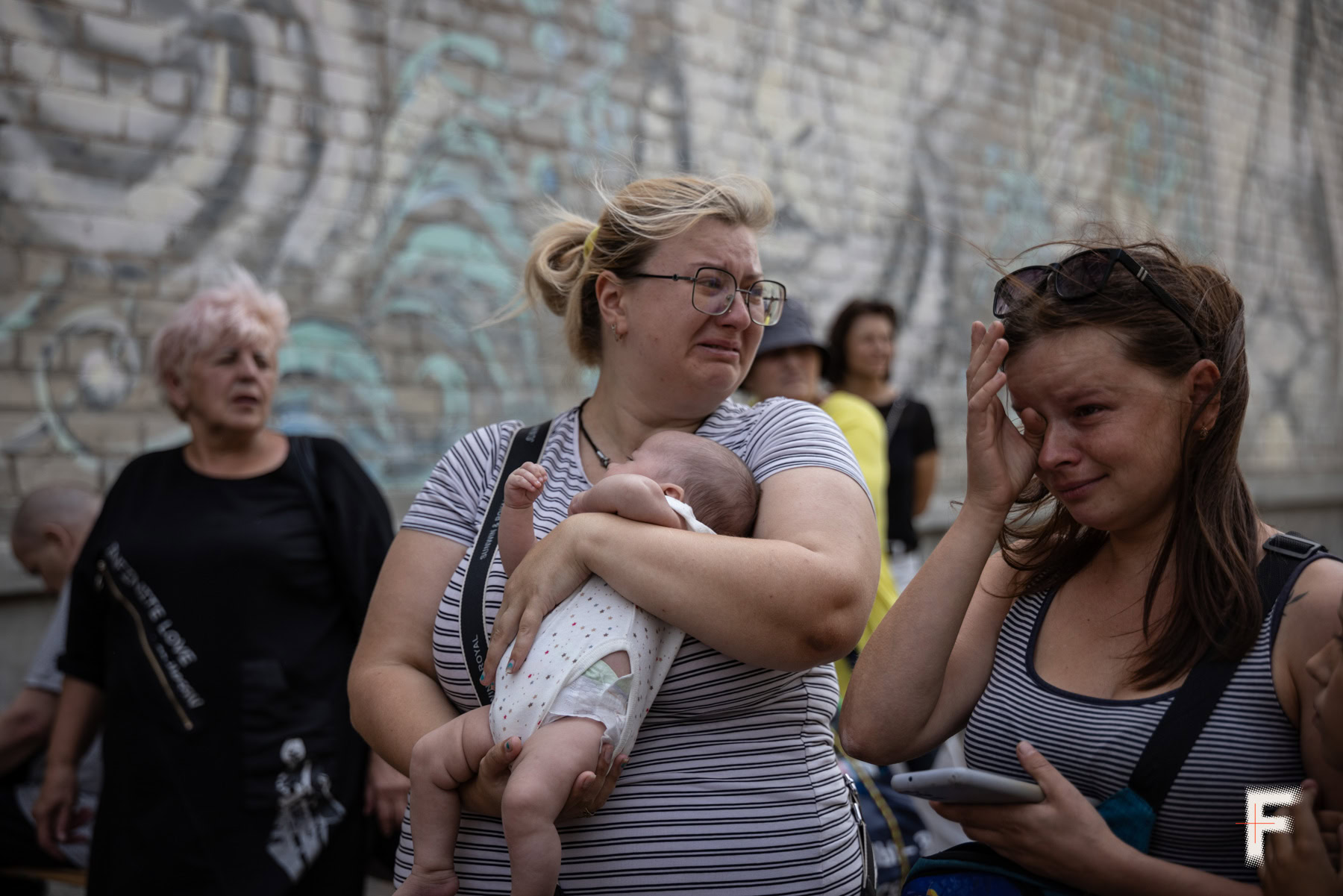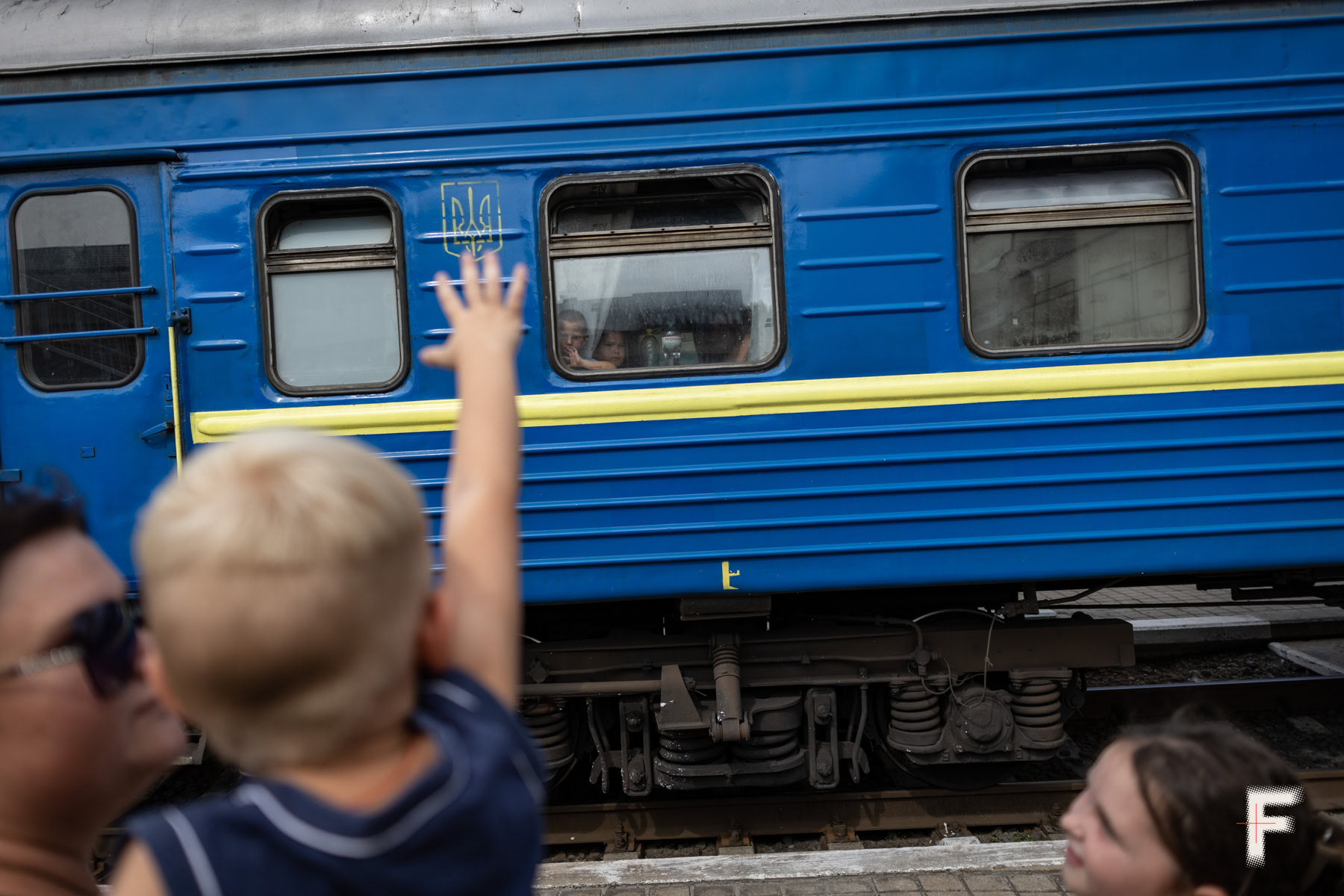

Pokrovsk became the first city I witnessed being killed before my eyes
Russian occupiers have been attacking Pokrovsk for over a year – since the summer of 2024, when they launched a major offensive in this direction. Since the start of the full-scale invasion, the city’s population has fallen from over 60,000 to barely a thousand (according to the latest data from the Donetsk Regional Administration). Evacuation is nearly impossible – the city lies in ruins, and what used to be residential neighborhoods are now the remains of apartment buildings that still hold the bodies of those killed by Russian shelling. Just a few months ago, many residents of Pokrovsk still believed that the worst – a ground assault – would never reach them. But the reality has surpassed even the darkest expectations, reports Frontliner journalist Alina Yevych.
At the beginning of March 2022, I saw Pokrovsk gripped by fear. News headlines screamed of breakthroughs by enemy forces, sending crowds into a frenzy at the evacuation train station. Residents and evacuees from surrounding areas, terrified by the prospect of the city being captured, first queued up for trains, attempting to flee in a chaotic rush.


Donetsk region, and even Pokrovsk itself, were divided into two camps: one – armed to the teeth, ready to fight the occupiers with knives (and some, especially bold, even with forks); the other hurrying to leave for regions that seemed safer. The city, which was supposed to become my new home, terrified me with its eerie emptiness until April of 2022.
By May, Pokrovsk began to come alive. Streets filled with people running with their dogs, and young entrepreneurs appeared at the farmers market. They were younger than the traditional elderly saleswomen who had stayed behind in the emptied city. Though few in number, these older ladies, clad in colorful jackets near the railway station, gave the city a less bitter feeling. By summer, more elderly residents had returned, and during the hot months, more people were arriving than standing with suitcases, waiting to leave.
In 2022–2023, Pokrovsk felt like a safe, cozy oasis in Donetsk. Nearby were [large] Kramatorsk and Sloviansk, both closer to the front line. There, khaki and olive dominated, with frequent plumes of smoke from military groups returning from combat missions. People traveled to Kramatorsk and Sloviansk for meetings, but they returned to Pokrovsk to be home – to find quiet and peace. Despite the presence of soldiers, the city felt remarkably civilian. Open flower shops and jewelry stores lined the streets, alongside farmers markets – some well-organized, some makeshift – where vendors loudly insisted the war would not reach them. When asked why, they would calmly reply, “Our boys won’t let it happen.” People lived and believed. Perhaps they believed too strongly, because within a few months, the occupiers, which were not unexpected since 2022, became a painful surprise for many.
Pokrovsk no longer felt safe – air strikes targeted it for hours at a time
By spring 2024, the war near Pokrovsk began to wear people down. Many started doubting that the war was far enough. Explosions on the outskirts first annoyed, then terrified. The first reaction people had was anger at what seemed like pointless shellings. But after the first explosion came a second, third, fourth – and they didn’t stop for hours. Sometimes the shelling repeated several times a day, and the sense of calm drifted further away with each strike.


The first bang sparked anger. The others made people anxiously glance in the direction from which they came. People who came from Selydove, Myrnohrad, and Ukrainsk began leaving again. They were among the first to go, already knowing what the next few months might bring. The residents of Pokrovsk, however, tried not to lose hope. Losing hope would mean accepting that they might have to abandon everything they had built over a lifetime and leave with nothing. Without a set destination, or even a city, to head to.
[Translators’ note: Cities of Selydove, Myrnohrad, and Ukrainsk have faced intense military activity since the beginning of Russia’s full-scale invasion of Ukraine, culminating in the occupation of Selydove in October 2024.]


I firmly believed the war would reach Pokrovsk only after having reached Kramatorsk. I was convinced the city would be the last to fall, that the Russian occupiers would stop there, unable to do anything further. I am unclear where my logic came from, but it seems to have vanished when the Russians advanced on Selydove. That city, only a ten-minute drive away, had seemed safe enough – until we suddenly had to evacuate our relatives in a rush.
At the beginning of June, after six months of pleading with them, there was a phone call at 5 a.m., panicked and with tears: “We are scared. We have been shelled since last evening, bombs are falling on the buildings of our friends.” Within a few hours of hurried preparations, we evacuated two of our family members, a husband and wife. As the roofs were smoldering behind them, they left for Pokrovsk, a city that had heard all those explosions. And still, there was hope that a miracle could happen. But given the front line and the losses we’ve endured in this war, miracles simply don’t exist.
Pokrovsk began to be abandoned even by those who had believed the war would never reach the city
The first missile aimed at killing Pokrovsk, not just wounding it, missed my house by 300 meters. It was summer, I was in the kitchen, and that whoosh marked the beginning of the end. At the time, there wasn’t a massive shelling – it was just a strike on a single building. The screams of people, the cries of children, the wailing of dozens of fire and police sirens filled the air. As I remember, no one even died that day, yet this was no longer just another “one-off” strike. It was the start of the torture of Pokrovsk, a torture that began with a destroyed apartment block.
With the return of the evacuation train service, Pokrovsk became eerie once again. The streets filled with people, mostly crying or rushing about with children in tow. Every train leaving the city left behind the hollow eyes of relatives at the station, making the sign of the cross as they watched it depart. Those older saleswomen who had given the city its sense of life in 2022 were now lost in a sea of suitcases; flowers, fresh eggs, and newly picked mushrooms no longer drew anyone’s attention. The few remaining saleswomen were brushed aside, their presence resented for “being in the way” as people rushed along the sidewalks, while taxis constantly came and went – sometimes picking up passengers, but more often bringing new arrivals.
One might have said the city was beginning to die, but it still breathed, though stiflingly. People were few, and seeing someone smile was a miracle. There was almost nothing left to smile about.


Pokrovsk fell truly still when the morning, evening, or nighttime shelling became just another routine. Those evacuees who still felt the city in their hearts stopped poring over news reports and photographs. Some found it too painful to look at the images; others managed to start a new life, or at least some part of it, in another city. For some, it was terrifying to see their homes and scattered belongings they left only “temporarily”.
At that time, cars still moved through Pokrovsk, and people walked the streets, insisting it was possible to live through this and they would never leave. Later, I saw some of them in the photographs of the “White Angels” – law enforcement officers documenting Russian war crimes, or as volunteers. Some were no longer alive; their bodies were taken to be buried in another city, a city that wasn’t their home.
It was painful to watch, knowing that one day I would have to leave as well, which happened a bit more abruptly than for many of those whose evacuations I had observed. One day, I simply left Pokrovsk by train – and couldn’t return. Evacuation services were canceled, and the city went on defense. I later returned to the Donetsk region, but to Kramatorsk, which also felt foreign and unfamiliar.
[Translator’s note: City going on defense means actively preparing to resist enemy attacks, with troops, checkpoints, and fortifications in place, and restricting civilian movement.]
The things I didn’t take with me, because Pokrovsk was closed to protect lives
The last time I was in Pokrovsk was in early spring 2025. I found myself there almost by chance, accompanying friends who had gone to collect their last belongings as they were evacuating. We joked about our own superstition, trying to avoid calling them the “last things”, because we still hoped we’d be able to return. But it was, in fact, the final trip.
I didn’t recognize the neighborhoods where I had lived, and I didn’t see my apartment entrance – it was simply gone, replaced by a heap of concrete rubble. Beneath the rubble, my sneakers, which I had intended to take “next time,” and my pajamas likely remain. My carrier for the street kittens I hadn’t managed to evacuate (animal rescue volunteers were now doing it under threat of drone strike) and a patch reading “Unbroken Pokrovsk,” wedged between the wall and a nightstand, are still there as well. And perhaps, beneath those ruins also lies my dream of living in Donetsk region – a dream I had grown attached to even as it was already being destroyed.
Pokrovsk is indeed broken. Broken, battered, tortured, ashen, and grief-stricken, with the scent of collapsed buildings and smoke from shelling lingering in the air. And yet, I still hope that one day I will return and see it come alive once more.
Text: Alina Evych
Photos: Andriy Dybchak, Nadiia Karpova
Adapted: Irena Zaburanna
***
In this blog, Frontliner reporters share their observations and reflections on how the full-scale war has changed their hometowns. The blog represents personal reflections and individual experiences that may not necessarily align with the views of the editorial team or readers.


